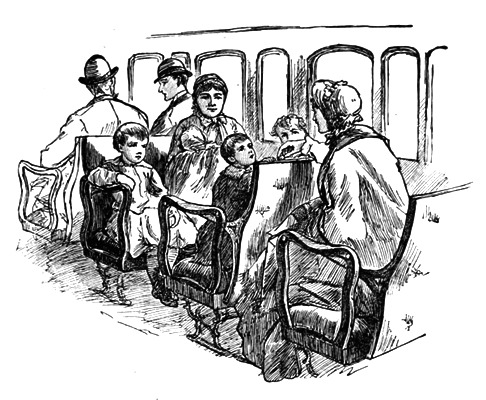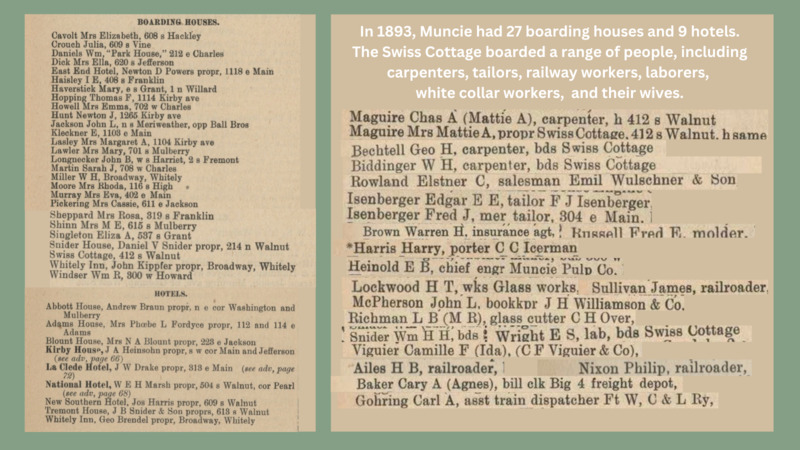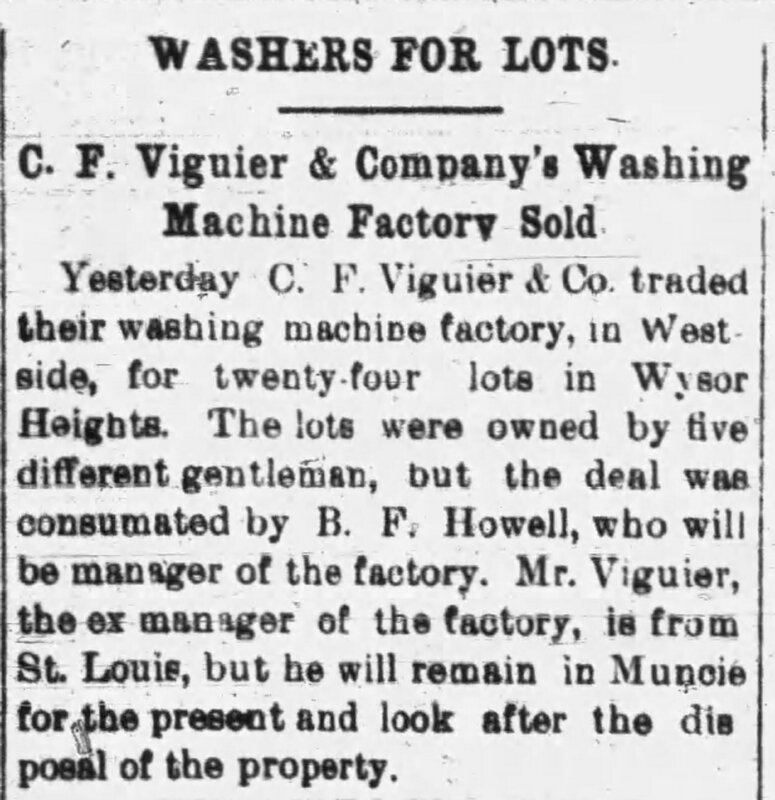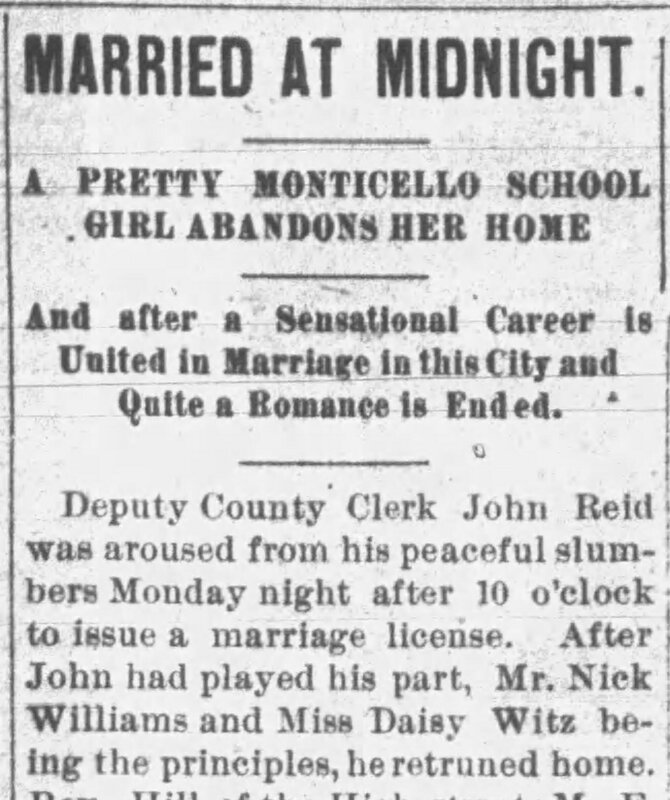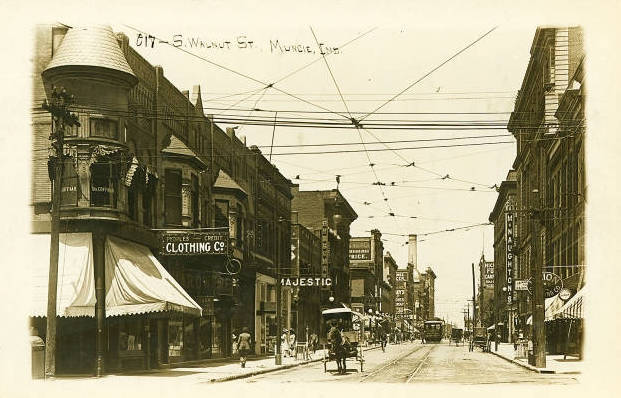Mrs. Mattie McGuire
Perhaps the most famous boarding house in nineteenth-century Muncie was Mrs. Kirke's from Louisa May Alcott's novel Little Women (1868-69). Borrowed repeatedly from the Muncie Public Library, readers followed Jo March as she traveled to New York City to be a governess for Mrs. Kirke's daughters. When she was not teaching, writing, or eating at the noisy communal dinner table, Jo lived in a tiny "sky-parlour" at the top of the house. Her experience, as a single woman working in a metropolitan city away from her family, was not uncommon. Many women from Muncie traveled for education or work opportunities, living for years away from traditional supervision in communal homes.
Renting rooms in boarding houses offered cameraderie, a pretense of supervision, and stability for single women, as well as comparatively inexpensive lodgings for everyone else. Lodgers could rent a single room or a suite, with or without meals, laundry, cleaning and other amenities by the week. From the nineteenth century, boarding house-keepers like Mrs. Kirke in New York City, and Mrs. McGuire in Muncie, played a central role in North America's intense urbanization process.
This biography video was researched and created by Luke Fields, Roc Ricker, Ashleigh O'Brien, and Noah Cullen for HIST 200-01 (Spring 2023) at Ball State University.
In 1893, when Mattie McGuire first appears as the proprietor of Swiss Cottage, there were 19,763 residents listed in the Muncie city directory. The city had grown dramatically since the discovery of the East Central Indiana gas field in 1886. The maps below show how developers platted new neighborhoods to the west and east of the city, as well as south of the Big Four railway line.
As the slide below shows, a wide variety of people boarded at the Swiss Cottage. While carpenters might have arrived through the profession they shared with Mr. McGuire, there was an even larger group of railway workers living in the house. These men were probably mostly single or widowed. Only two couples lived at the house, in addition to the McGuires. Wendy Gamber's research contrasts the popular vision of a "home" being one's own separate lodgings with the reality that many couples lived in boarding houses quite happily.
The newspaper article (left) suggests the wealth of one of the boarding house's couples. The Viguiers sold their business manufacturing washing machines for five properties located in Wysor's Addition (see the 1893 map above). In May 1894, when Mr. Viguier first arrived in Muncie he lodged at the Southern Hotel. Perhaps when it became clear that he would stay in the city for several months, he moved to more permanent rooms at the Swiss Cottage. Perhaps then he sent for his wife to join him from St. Louis.
In January and February 1893, The Muncie Evening Press carried announcements of the dissolution of another business. Isenberger and Hartge, was co-owned by F.J. Isenberger, a merchant tailor, who lodged at the Swiss Cottage. The next time that his name appeared in the newspaper was the announcement of his marriage to Ruth Meek two years later.
The advertisement (left), printed by Mary Koch, combined both business and a sense of boarding houses' public perception. Mrs. Koch's medical skills might seem unusual, given that she states that they stem from "second sight," but she promised treatment for all chronic diseases. She also offers clients something akin to fortune-telling, that is more social and financial in focus than medical. As the advertisement encourages "Delicate ladies especially invited to call," we might imagine gentility and discretion that seem out of place in a boarding house with more than a dozen occupants. Perhaps because of its size and central location, traveling professionals found boarding houses to be useful temporary offices.
One of the perceived dangers of nineteenth century boarding houses, was the proximity of unmarried men and women. Louisa May Alcott set the romance between Jo March and Professor Bhaer to blossom in a boarding house, knowing that it would sit with readers' expectations and concerns. While the Little Women romance proved wholesome and led to marriage, the Swiss Cottage had its fair share of scandals.
In the nineteenth-century, for couples seeking to elope, the boarding house was the new inn on the road to Gretna Green. Seventeen year-old Daisy Witz, the daughter of a wealthy Monticello family, eloped with twenty-eight year-old Mr. Williams. The couple pretended to be married and boarded at the Swiss Cottage, while they sought a license and opportunity to wed. The couple took the train to Union City after failing to get a license in Muncie. Nearing midnight, they woke the Union City deputy county clerk and a Methodist minister to achieve their goal. Meanwhile Witz's angry father sent an investigator to retrieve his daughter. Only once the couple was wed did the investigator find them and tell the new wife that she was disowned, apparently, much to her delight.
Below is an early twentieth-century postcard showing the view south on Walnut Street. From June 1907, the Majestic Theater sat at 415-417 South Walnut Street, across the street from where the Swiss Cottage once operated. Although the boarding house had closed by 1900, this postcard gives a sense of the how busy the neighborhood was. In the center of Muncie's bustling commercial district, boarders could walk or take the street car all over town.
Female boarding house-keepers fulfilled the traditional female domestic role of household maintenance with sharp management skills. As Jo March described working working with Mrs. Kirke: "it's honest work, and I'm not ashamed of it." In cities like Muncie, it was essential work that supported a growing profesisonal and working-class clientele. While the popular vision of a boarding house built upon concern for young single workers, and especially women like Jo March and Daisy Witz, the majority of the Swiss Cottage's clientele were men or married couples. Without boarding houses Muncie's workers would struggle to find shelter and factory production would slow, marking the relationship between housing and industry as essential.
To learn more about how this project came together and used context to understand the past, watch this methodology video, which was researched and created by Luke Fields, Roc Ricker, Ashleigh O'Brien, and Noah Cullen.
By the opening of the Majestic Theater in 1907, Muncie was an industrial center that was almost a century away from its early indigenous population. Although no Native Americans lived in Delaware county, they appeared in Wild West shows and lived on in the popular imagination. Click on Memories of Indigenous Muncie to see how women from the Daughters of the American Revolution organization sought to memorialize a particular indigenous past.

